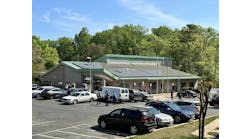Equipment lease financing is now being used to create a low-cost path to microgrid ownership. But getting there takes an experienced, insider’s knowledge of energy tax rules and regulations.
It’s those attributes that best distinguish CleanView Capital, according to founder and Managing Partner Stanley Fishbein, a tax attorney with 35 years of experience in tax law, accounting and equipment leasing. The Westchester County, New York-based company leverages the knowledge and experience of its two founding partners to devise, structure and execute customized finance for a wide variety of clean energy projects, including microgrids.
Microgrid Knowledge spoke with Fishbein recently regarding conditions and trends in microgrid finance.
Commercial leasing and microgrid finance
CapQuest Group, a company Fishbein founded in 2002, morphed into CleanView Capital a couple of years ago, when Albert Golembeski joined as a partner to help accelerate the company’s growth in financing clean energy systems.
“Al and I have each been in the equipment leasing industry for decades, and for the last several years we’ve been focusing on clean energy projects – solar in particular,” Fishbein said. “In terms of business and industry longevity we’ve been around for quite some time, but for the last several years we’ve been focusing on clean energy projects – solar in particular.”
The most popular type of microgrid finance CleanView offers is the Clean Energy Ownership Program, which provides a path to ownership for those that want to acquire microgrid assets long term, according to Fishbein.
It is no simple matter to create a microgrid financing model that customizes and combines familiar, core aspects of traditional equipment leasing while complying with industry and tax law.
“Because equipment leasing is a very technical, niche area, even commercial bankers are not familiar with all of its aspects and nuances. There are any number of tax laws, regulations and rulings that have to be taken into consideration when you’re structuring transactions,” he said.
Car leases or apartment rental agreement are familiar forms of leases. But they are are not financing instruments. “You’re paying a monthly fee for the use of an asset for a specified period. If you don’t exercise a purchase option, you are required to return the asset to the lessor,” he said.
Are you looking for microgrid financing? Microgrid 2018 offers an opportunity to meet one-on-one with financiers through the Microgrid Finance Connection.
Path to ownership
CleanView’s Clean Energy Ownership Program uses a seven-year true lease (aka operating lease) with 100 percent tax-deductible monthly payments for the lessee, e.g. a microgrid host. Coupled with the right to acquire the microgrid, say from the project developer, the program creates a path to microgrid ownership. That’s the distinguishing factor that overcomes a commonly found budgetary hurdle in microgrid finance for organizations that would like to acquire and own the asset for the long term.
“The number one problem that we solve for many companies is the monetization of the federal energy investment tax credit (ITC) that is available to the first owner of solar and certain other energy equipment,” Fishbein said. “This is a big problem for pass-through tax entities such as LLCs and ‘S’ Corporations, as well as regular corporations that have insufficient tax liability to offset with a tax credit.”
In the Clean Energy Ownership Program, the microgrid lessor, e.g. the project developer monetizes any available federal ITC and uses that value to subsidize the lessee’s payments. In the case of solar equipment with a 30 percent ITC, the lessee’s all-in payments, including the end of lease purchase, is less than the original invoice cost of the system, he said. In addition, all the payments and purchase price are 100 percent tax-deductible.
“As a result,” Fishbein added, “by using our lease as a de facto method of financing, companies achieve a lower cost of ownership than if using a loan to finance their purchase.”
Any energy savings gained from the use of the equipment, as well as all local and state incentives, such as grants, feed-in tariffs, and renewable energy credits, go to the microgrid customer (the lessee/eventual owner).
“A 25-year cash flow analysis demonstrates that by using our Clean Energy Ownership Program, customers will obtain greater energy savings and more overall value than is available from cost-sharing programs and power purchase agreements,” he said.
Taking up the cause for solar and then microgrids
Fishbein has been a solar and renewable energy advocate for 10 years, doing pro bono work for the New York chapter of the American Solar Energy Society (ASES). That has influenced CleanView’s microgrid finance work.
“Many people, solar customers, told us they weren’t happy with existing solar industry financing, including those offered by the top, third party-owned (TPO) solar leasing companies,” he said.
Solar industry lease program providers experienced tremendous push-back when solar lease customers became concerned that too much value was being retained by the providers. Customers feared that they might wind up paying more for electricity from the solar PV systems installed on their property than they would for electricity from their local utility, he said.
ASES encouraged Fishbein to take up their cause and come up with solar financing that would allocate more value to solar customers. Given his background, Fishbein wound up creating a program for commercial rather than residential customers.
After receiving positive feedback from solar contractors and their customers, Fishbein continued to refine and develop his business model and lease, which has evolved into CleanView Capital and its Clean Energy Ownership Program.
A growing roster of microgrid finance clients
CleanView is focusing on financing on-site, behind the utility meter installations. It also successfully financed a utility microgrid project developed by Ameren.
Unable to find a microgrid finance solution that met critical requirements, Ameren in late 2016 invited CleanView Capital to come up with financing for a microgrid project at its technical operations center in Champaign-Urbana, Illinois. Ameren Illinois wanted to use the microgrid to test 16 use cases, as well as generate a return on investment.
Chicago-based S&C Electric was awarded the contract to design, install and automate the project. Awarded in June 2016, the contract specified that Ameren Illinois would buy the equipment from S&C. But this turned out to be a problem. Illinois is a restructured state, so a utility cannot own generation assets.
Leasing the assets appeared to be a solution, but attempts to structure an acceptable lease with two different leasing companies failed, according to Fishbein. Enter CleanView Capital.
CleanView provided Ameren Illinois with acceptable lease terms for the generation assets, which included the right to assign its purchase options, thereby obtaining a tax-compliant solution to its ownership problem. Ameren Illinois paid for the balance of system costs, and will wind up with an attractive return on its investment, according to Fishbein.
At the end of the day, Fishbein gains satisfaction from his microgrid finance work, and that provides inspiration, as well as motivates him and CleanView to carry on. “As a solar and renewable energy advocate I am always seeking to provide greater value to customers, not come up with some newfangled financial structure that provides greater benefits to the provider. That’s really the core of our microgrid financing philosophy.”
Tour the Ameren microgrid — and three other microgrids in the Chicago area. Join us at Microgrid 2018 in Chicago May 7-9.






